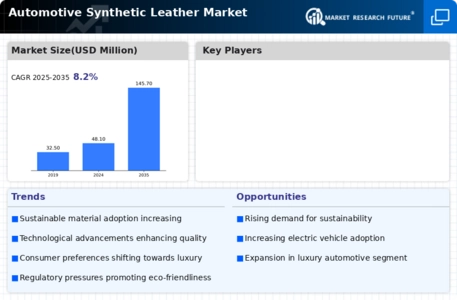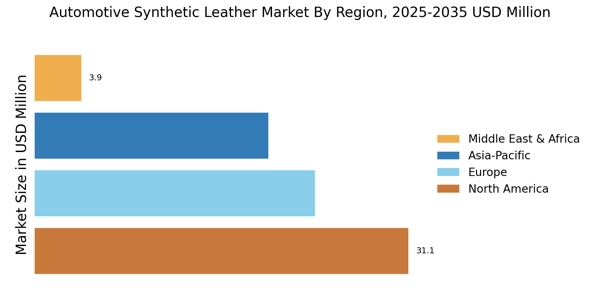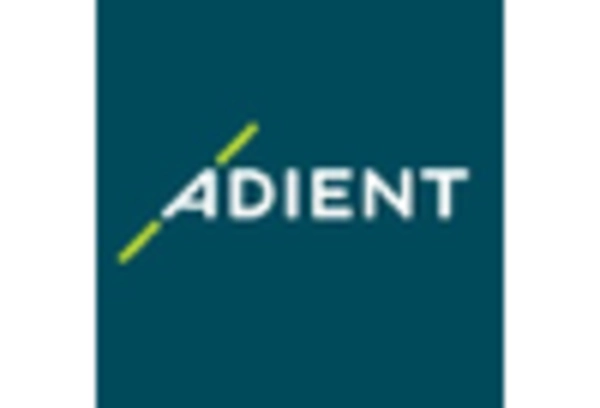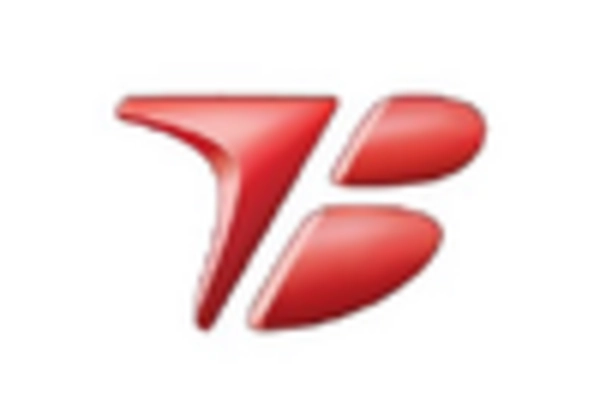Leading market players are investing heavily in the research and development in order to expand their product lines, which will help the Automotive Synthetic Leather Market grow even more. Market players are also undertaking a variety of strategic activities to spread their global footprint, with important market developments including mergers and acquisitions, new product launches, contractual agreements, higher investments, and collaboration with other organizations. To spread and survive in a more competitive and rising market climate, the Automotive Synthetic Leather industry must offer cost-effective items.
Manufacturing locally to minimize the operational costs is one of the key business tactics used by the manufacturers in the global Automotive Synthetic Leather industry to benefit the clients and increase the market sector. In recent years, the Automotive Synthetic Leather industry has offered some of the most significant advantages to the automotive industry. Major players in the Automotive Synthetic Leather Market, including Mayur Uniquoters Limited, San Fang Chemical Industry Co. Ltd, Alfatex Italia SRL, Yantai Wanhua Artificial Leather Group Co. Ltd, Nan Ya Plastics Corporation, Kuraray Co. Ltd, Zhejiang Hexin Industry Group Co. Ltd., Toray Group, H.R. Polycoats Pvt.
Ltd, Filwel Co. Ltd, and others are trying to increase market demand by investing in the research and development operations.
BASF SE, headquartered in Ludwigshafen, Germany, is one of the world's largest chemical companies and a leading provider of a broad range of products and solutions. Founded in 1865, BASF operates in various segments, including chemicals, materials, industrial solutions, surface technologies, nutrition and care, and agricultural solutions. The company is known for its commitment to sustainability and innovation, consistently developing products that address global challenges such as climate change, resource efficiency, and food security.
In October 2023, BASF SE and Teijin Limited announced a partnership in order to develop and market a new generation of high-performance synthetic leather for automotive applications. This partnership leverages BASF's expertise in advanced materials and Teijin's experience in synthetic leather production to create innovative solutions for car manufacturers.
Hyundai Motor Company, the South Korean multinational automotive manufacturer is one of the largest and most prominent players in the global automotive industry. Established in 1967, Hyundai has evolved into a powerhouse, producing a diverse range of vehicles, including sedans, SUVs, and electric vehicles. Known for its commitment to innovation and quality, Hyundai has gained international recognition for its advancements in technology, design, and fuel efficiency.
In September 2023, Hyundai Motor Company and Kolon Industries Inc. signed a strategic partnership to develop and manufacture sustainable and eco-friendly synthetic leather for Hyundai's future electric vehicle models. This partnership aims to reduce the environmental impact of car manufacturing and meet the growing demand for sustainable materials.


















Leave a Comment